Shiqing Fan
MCPToolBench++: A Large Scale AI Agent Model Context Protocol MCP Tool Use Benchmark
Aug 11, 2025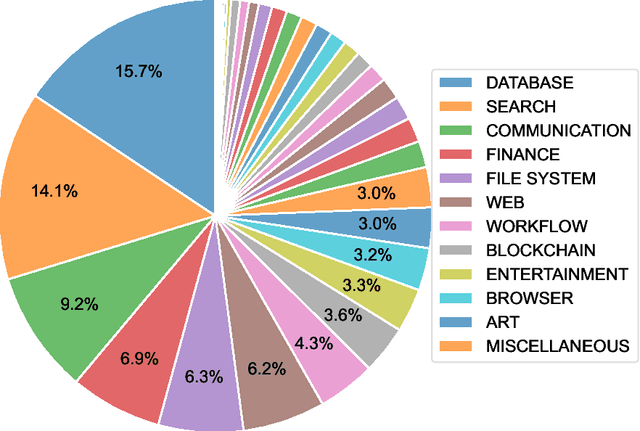

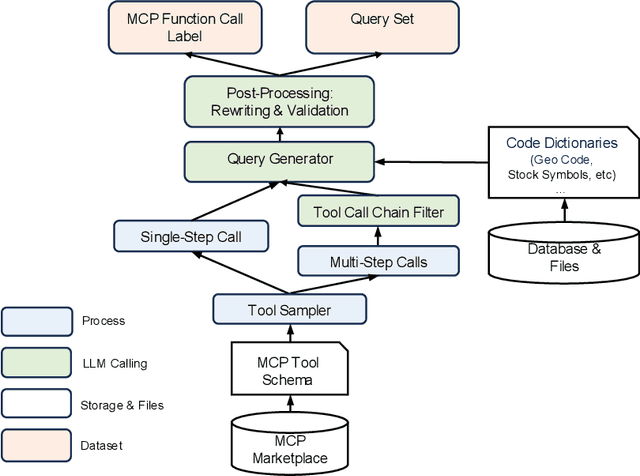
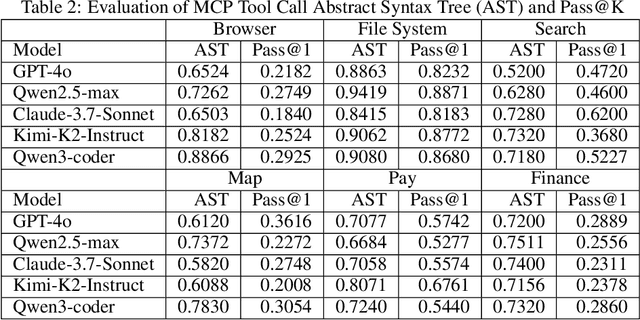
Abstract:LLMs' capabilities are enhanced by using function calls to integrate various data sources or API results into the context window. Typical tools include search, web crawlers, maps, financial data, file systems, and browser usage, etc. Integrating these data sources or functions requires a standardized method. The Model Context Protocol (MCP) provides a standardized way to supply context to LLMs. However, the evaluation of LLMs and AI Agents' MCP tool use abilities suffer from several issues. First, there's a lack of comprehensive datasets or benchmarks to evaluate various MCP tools. Second, the diverse formats of response from MCP tool call execution further increase the difficulty of evaluation. Additionally, unlike existing tool-use benchmarks with high success rates in functions like programming and math functions, the success rate of real-world MCP tool is not guaranteed and varies across different MCP servers. Furthermore, the LLMs' context window also limits the number of available tools that can be called in a single run, because the textual descriptions of tool and the parameters have long token length for an LLM to process all at once. To help address the challenges of evaluating LLMs' performance on calling MCP tools, we propose MCPToolBench++, a large-scale, multi-domain AI Agent tool use benchmark. As of July 2025, this benchmark is build upon marketplace of over 4k MCP servers from more than 40 categories, collected from the MCP marketplaces and GitHub communities. The datasets consist of both single-step and multi-step tool calls across different categories. We evaluated SOTA LLMs with agentic abilities on this benchmark and reported the results.
MoE Parallel Folding: Heterogeneous Parallelism Mappings for Efficient Large-Scale MoE Model Training with Megatron Core
Apr 21, 2025Abstract:Mixture of Experts (MoE) models enhance neural network scalability by dynamically selecting relevant experts per input token, enabling larger model sizes while maintaining manageable computation costs. However, efficient training of large-scale MoE models across thousands of GPUs presents significant challenges due to limitations in existing parallelism strategies. We introduce an end-to-end training framework for large-scale MoE models that utilizes five-dimensional hybrid parallelism: Tensor Parallelism, Expert Parallelism, Context Parallelism, Data Parallelism, and Pipeline Parallelism. Central to our approach is MoE Parallel Folding, a novel strategy that decouples the parallelization of attention and MoE layers in Transformer models, allowing each layer type to adopt optimal parallel configurations. Additionally, we develop a flexible token-level dispatcher that supports both token-dropping and token-dropless MoE training across all five dimensions of parallelism. This dispatcher accommodates dynamic tensor shapes and coordinates different parallelism schemes for Attention and MoE layers, facilitating complex parallelism implementations. Our experiments demonstrate significant improvements in training efficiency and scalability. We achieve up to 49.3% Model Flops Utilization (MFU) for the Mixtral 8x22B model and 39.0% MFU for the Qwen2-57B-A14B model on H100 GPUs, outperforming existing methods. The framework scales efficiently up to 1,024 GPUs and maintains high performance with sequence lengths up to 128K tokens, validating its effectiveness for large-scale MoE model training. The code is available in Megatron-Core.
Upcycling Large Language Models into Mixture of Experts
Oct 10, 2024



Abstract:Upcycling pre-trained dense language models into sparse mixture-of-experts (MoE) models is an efficient approach to increase the model capacity of already trained models. However, optimal techniques for upcycling at scale remain unclear. In this work, we conduct an extensive study of upcycling methods and hyperparameters for billion-parameter scale language models. We propose a novel "virtual group" initialization scheme and weight scaling approach to enable upcycling into fine-grained MoE architectures. Through ablations, we find that upcycling outperforms continued dense model training. In addition, we show that softmax-then-topK expert routing improves over topK-then-softmax approach and higher granularity MoEs can help improve accuracy. Finally, we upcycled Nemotron-4 15B on 1T tokens and compared it to a continuously trained version of the same model on the same 1T tokens: the continuous trained model achieved 65.3% MMLU, whereas the upcycled model achieved 67.6%. Our results offer insights and best practices to effectively leverage upcycling for building MoE language models.
Deblurring Processor for Motion-Blurred Faces Based on Generative Adversarial Networks
Mar 03, 2021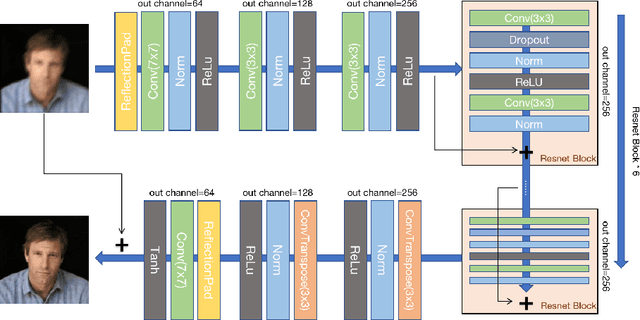

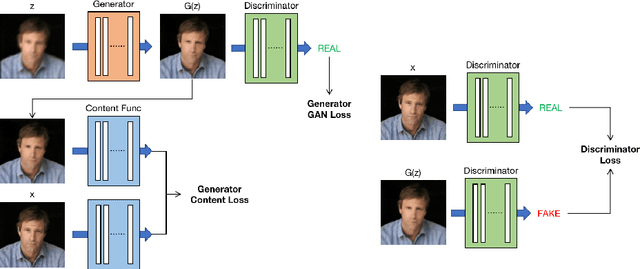
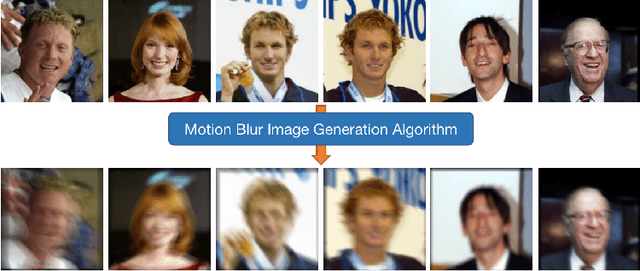
Abstract:Low-quality face image restoration is a popular research direction in today's computer vision field. It can be used as a pre-work for tasks such as face detection and face recognition. At present, there is a lot of work to solve the problem of low-quality faces under various environmental conditions. This paper mainly focuses on the restoration of motion-blurred faces. In increasingly abundant mobile scenes, the fast recovery of motion-blurred faces can bring highly effective speed improvements in tasks such as face matching. In order to achieve this goal, a deblurring method for motion-blurred facial image signals based on generative adversarial networks(GANs) is proposed. It uses an end-to-end method to train a sharp image generator, i.e., a processor for motion-blurred facial images. This paper introduce the processing progress of motion-blurred images, the development and changes of GANs and some basic concepts. After that, it give the details of network structure and training optimization design of the image processor. Then we conducted a motion blur image generation experiment on some general facial data set, and used the pairs of blurred and sharp face image data to perform the training and testing experiments of the processor GAN, and gave some visual displays. Finally, MTCNN is used to detect the faces of the image generated by the deblurring processor, and compare it with the result of the blurred image. From the results, the processing effect of the deblurring processor on the motion-blurred picture has a significant improvement both in terms of intuition and evaluation indicators of face detection.
An Alternative Practice of Tropical Convolution to Traditional Convolutional Neural Networks
Mar 03, 2021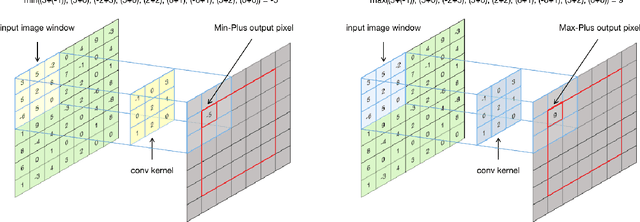

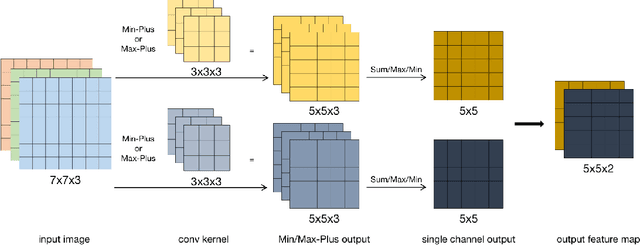

Abstract:Convolutional neural networks (CNNs) have been used in many machine learning fields. In practical applications, the computational cost of convolutional neural networks is often high with the deepening of the network and the growth of data volume, mostly due to a large amount of multiplication operations of floating-point numbers in convolution operations. To reduce the amount of multiplications, we propose a new type of CNNs called Tropical Convolutional Neural Networks (TCNNs) which are built on tropical convolutions in which the multiplications and additions in conventional convolutional layers are replaced by additions and min/max operations respectively. In addition, since tropical convolution operators are essentially nonlinear operators, we expect TCNNs to have higher nonlinear fitting ability than conventional CNNs. In the experiments, we test and analyze several different architectures of TCNNs for image classification tasks in comparison with similar-sized conventional CNNs. The results show that TCNN can achieve higher expressive power than ordinary convolutional layers on the MNIST and CIFAR10 image data set. In different noise environments, there are wins and losses in the robustness of TCNN and ordinary CNNs.
Min-Max-Plus Neural Networks
Feb 12, 2021
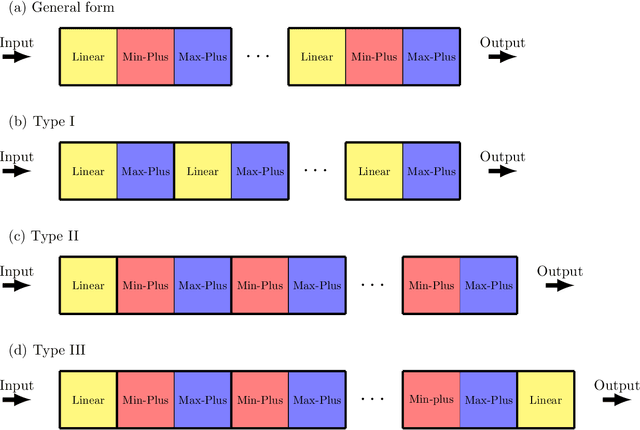

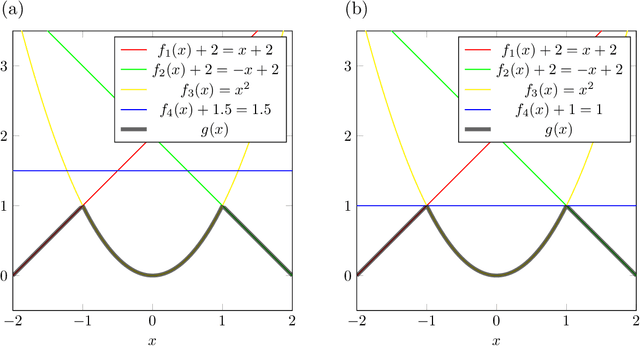
Abstract:We present a new model of neural networks called Min-Max-Plus Neural Networks (MMP-NNs) based on operations in tropical arithmetic. In general, an MMP-NN is composed of three types of alternately stacked layers, namely linear layers, min-plus layers and max-plus layers. Specifically, the latter two types of layers constitute the nonlinear part of the network which is trainable and more sophisticated compared to the nonlinear part of conventional neural networks. In addition, we show that with higher capability of nonlinearity expression, MMP-NNs are universal approximators of continuous functions, even when the number of multiplication operations is tremendously reduced (possibly to none in certain extreme cases). Furthermore, we formulate the backpropagation algorithm in the training process of MMP-NNs and introduce an algorithm of normalization to improve the rate of convergence in training.
Auto-MAP: A DQN Framework for Exploring Distributed Execution Plans for DNN Workloads
Jul 08, 2020



Abstract:The last decade has witnessed growth in the computational requirements for training deep neural networks. Current approaches (e.g., data/model parallelism, pipeline parallelism) parallelize training tasks onto multiple devices. However, these approaches always rely on specific deep learning frameworks and requires elaborate manual design, which make it difficult to maintain and share between different type of models. In this paper, we propose Auto-MAP, a framework for exploring distributed execution plans for DNN workloads, which can automatically discovering fast parallelization strategies through reinforcement learning on IR level of deep learning models. Efficient exploration remains a major challenge for reinforcement learning. We leverage DQN with task-specific pruning strategies to help efficiently explore the search space including optimized strategies. Our evaluation shows that Auto-MAP can find the optimal solution in two hours, while achieving better throughput on several NLP and convolution models.
 Add to Chrome
Add to Chrome Add to Firefox
Add to Firefox Add to Edge
Add to Edge